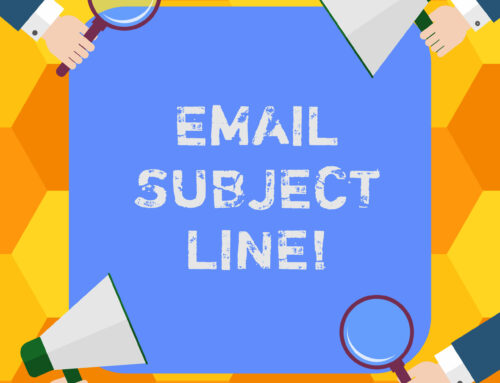One of the BEST ways to raise awareness and find new donors is to get out and speak to groups in your community.

A successful talk can bring new supporters, volunteers, donations, and maybe even additional speaking opportunities.
It’s also a great way to spread the word about your organization and reach a lot of people at once.
I know speaking isn’t everyone’s thing, and I know it might be scary, but it can help you reach your fundraising goals much faster.
Maybe you’ve spoken to a few groups but haven’t gotten the results you want. I get it. That happened to me at first, too.
Once I figured out how to deliver a great talk and to go in with a plan, I left every speaking gig with a full sign-up sheet, notes from people who wanted to volunteer, and a fistful of checks and cash.
If you’d love to do more speaking and rock the house, it’s possible. You may just have a few tweaks to make first.
Here are my 10 tips for leading a successful nonprofit speaking gig:
1. Keep your audience engaged

Start off with a bang and follow a structure that flows well. Include interactive elements, stories, and even a little humor in your presentation.
Surprise them. Delight them. Pull their heartstrings. The more engaged your audience is, the more likely they are to take action when you tell them the different ways they can get involved with your nonprofit.
2. Don’t fire hose your audience with information
It can be tempting to include a lot of information in your presentation and to talk really fast especially if you’re feeling nervous. But you may lose your audience if you overshare.
Remember this: you only need to tell them enough to peak their interest. You don’t need to share everything there is to know about your organization.
Create an outline to help you stay on track and on time, and break up your presentation into sections that include memorable stories.
3. Start with a Whiplash Statistic
It’s important to have an attention grabber when you begin your talk. Choose something that people will feel a bit shocked about. For example, a food bank might say “One out of every eight people in our area is going to go hungry today because they don’t have access to food.”
Make sure your whiplash statistic is relatable. Don’t use too big of a number or people won’t be able to wrap their head around it. For example, if you say “One million people need our services” that’s not very relatable and not as effective as “One out of three kids will go hungry today.”
People tend to remember the first thing you say and the last thing you say, so start off strong by sharing a statistic that knocks people off their feet.
4. Manage your butterflies

It’s perfectly okay to be nervous, you just need to do your best to control your nerves. Try to focus on your passion for your organization and keep all of the people depending on you in the back of your mind. The presentation isn’t about you, the speaker, it’s about spreading the word about the need your community has and letting people how they can help support your nonprofit in addressing the need.
Also remember that the more you speak, the more comfortable you will get. So, make sure to practice your talk as often as you can.
5. Avoid perfectionism
It’s important to have a well-prepared talk, but don’t get too caught up in making your talk perfect.
Done is always better than perfect. And once you practice your presentation a few times, you’ll start to figure out what sections you may want to tweak.
Pay attention to what your audience responds to and what puts them to sleep. Then adjust your talk accordingly. Remember that your talk doesn’t have to be perfect to get people to get involved with your nonprofit.
6. Keep your energy high
The higher your energy, the more you’ll keep people engaged. For example, if you present in a boring monotone voice, your audience will become bored, and they will tune you out. So let your passion shine for your nonprofit’s mission.
Do a few jumping jacks before you take the stage. Shake out your arms. Get the blood pumping in your body and your energy will rise, too.
7. Share a memorable story

Sharing a memorable story is great way to connect with your audience during a presentation. It can be overwhelming to some people when you share with them how much need there is in their community for what your nonprofit does. But if you share a story about one life being changed, it makes it easier for an audience to see the impact that your nonprofit does, and it can help them see how their support can make a difference.
A “before-and-after” style story works well and gives you the chance to showcase the difference your organization can make without talking too much about what your nonprofit does. Talk about what their life was like before they found you and what their life is like now.
8. Stay on time
Staying on time is critical to the success of your speaking gig. It’s respectful to the audience and to the person who invited you to speak. No one wants to sit in on a presentation that goes on and on, way over time. And some clubs and groups that you may be presenting to have strict end times, so if your presentation goes over the time limit some of the audience members may leave before you’re done.
Make sure to practice your talk several times while timing yourself to make sure you can end on time.
9. Clear call to action

At the end of your presentation, you’ll need a clear call to action. One of the best ways to do this is to create a “How you can help” sheet. On this sheet you can list out all of the different ways people can support your organization. You could ask them to become a monthly donor, volunteer, donate items, or even include a section to invite you to speak.
If you have a handout to give them, then they are more likely to take action instead of going on with their day and forgetting about your presentation.
10. Collect contact information
At the end of your talk, ask people to give you their contact information so you can send them more information about your nonprofit. Don’t ask them to “sign up for our newsletter.” No one wants another newsletter. But if they’re moved by your story, they may want to know how they can get more involved.
You can collect business cards, pass around a signup sheet, or even send them to an opt-in page on your website. Just make sure that you get permission from these people before you start emailing them regularly. Don’t just get the group’s membership list and enter them all into your system. That’s not okay, and it’s actually illegal. When you ask for business cards or pass around a sign-up sheet, make sure tell people that when they give you their contact information, you’ll be sending something via email.
There are dozens more tips I could give you about rocking the house with speaking gigs, but these will get you started.

![Build a Nonprofit Website that Works [Steal These Ideas!]](https://getfullyfunded.com/wp-content/uploads/2012/09/AdobeStock_260038257-scaled-500x383.jpeg)




This is actually helpful, thanks.
So helpful. I was lost and you gave me hope. Thank you
Thank you so much for this!